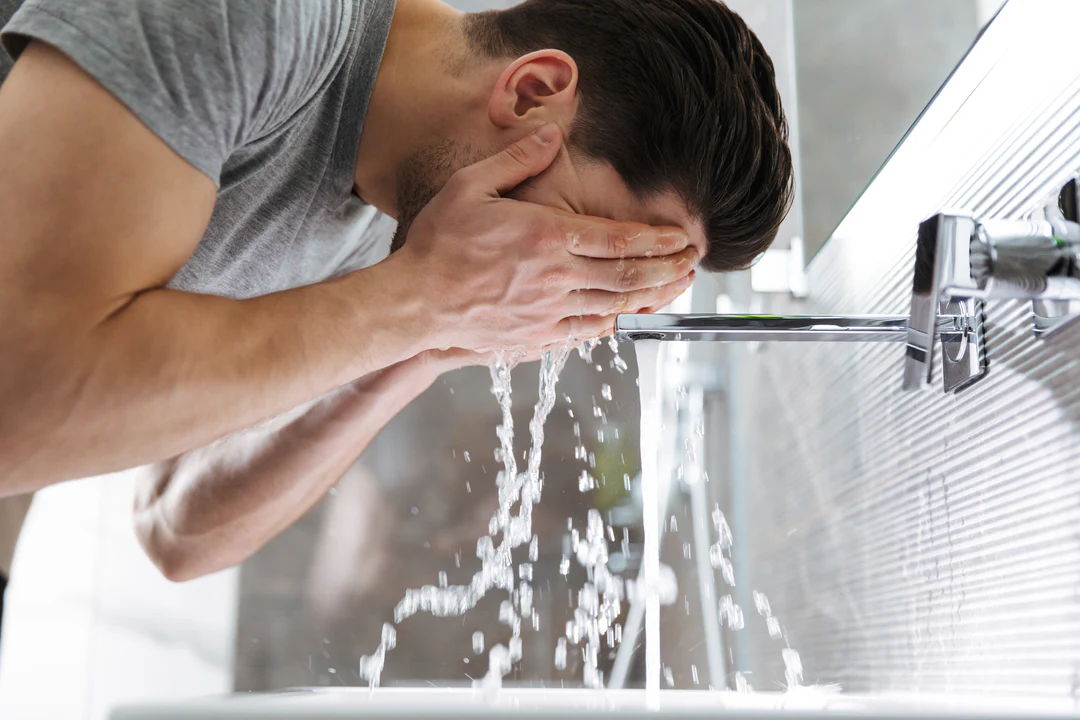
How to get rid of pimples on your face?
Nothing is more frustrating than finding yourself with a pimple, especially if you put in the effort and maintain a good skincare routine with active ingredients and effective products.
Unfortunately, sometimes breakouts happen, but now is not the time to hide! We will explore various ways to get rid of acne on your face and even try to find out why they appear.
How to get rid of pimples fast?
There are many ways that promise to get rid of acne fast, some of which are more effective than others. The only thing you need to remember is to make sure you don’t cause permanent damage to your skin. Here are some examples of how to get rid of pimples quickly and effectively.
Keep your hands away from your face. Your fingers carry a lot of bacteria, and if you touch your face frequently, these bacteria can enter your pores, which over time can cause acne, blackheads, and other blemishes. If you can’t resist touching your face, make sure your hands are clean.
This limits the amount of bacteria that is transferred from your hands to your skin throughout the day. This also includes not picking and squeezing pimples, even if it looks tempting. Pinching can also cause skin damage
leading to hyperpigmentation and scarring.
Place ice cubes on the area. Yes, you read that right, ice can work wonders when applied correctly. If you notice a large, red, painful pimple, take an ice cube and wrap it in a clean cloth. Hold the ice cube in place for about 2-3 minutes. As you repeat this throughout the day, you will experience less pain as well as less redness.
Avoid heavy makeup to reduce blemishes. It may be tempting to opt for a full coverage foundation and apply it all over your face. However, in most cases, this will cause the skin to look “bumpy” and may even make it larger and the pimple visible through any product throughout the day.
If you opt for a light, tinted moisturizer or CC cream, your overall skin tone will be more even. Cover the blemish with a thick concealer and then use a small, clean brush to apply a moderate amount of concealer over the blemish. This provides the best coverage that lasts all day while preventing pores from clogging, which can lead to more blemishes and breakouts.
Keep your skin clean and peel-free. When following a good skin care routine, use a cleanser, acid toner, and products with active ingredients like salicylic acid. They already do a great job of keeping your skin clear and preventing future breakouts.
One thing you should avoid is overusing harsh scrubs, toners, or other exfoliating products, as this will only cause your skin to become very dry and strip it of essential oils and moisture. Since your skin will stimulate sebum production to combat dryness, you may end up with more acne on your face.
Here are some quick ways to get rid of acne. While it may not be as fast as you would like, these methods will benefit your skin in the long run without further worry of unwanted breakouts.
What are the causes of freckles on an adult’s face?
The causes of adult acne are surprisingly similar to those of teenage acne, such as: B. Excessive sebum, the natural oil on your skin, and bacteria.
You’ll find that all of the hormonal changes that usually come with pregnancy and menstruation can trigger excess sebum production. As mentioned before, sticking to your skin care routine will help keep your acne under control
and prevent new outbreaks from forming.
If you have a dry skin type and your skin is still blemished, regular exfoliation may be beneficial for you. This is because a layer of dead skin cells builds up on the skin over time, which can lead to many blemishes, such as blackheads, whiteheads, and acne as a result.
Other factors, such as excessive stress, can also lead to adult acne. The best treatment for this is a combination of techniques such as exercise, meditation, and breathing exercises. Using some of these methods, you may notice a significant improvement in stress-related breakouts.
How to Get Rid of Under-Skin Pimples Overnight?
If you want to get rid of pimples overnight quickly, you can follow this simple routine. Of course, keep in mind that it may take a few nights for your complexion to lighten slightly, depending on the type and size of your acne.
Make sure to thoroughly remove all makeup and product residue. Use a serum that is rich in acne-fighting ingredients such as salicylic acid. If you haven’t already, incorporate retinol into your nightly routine. Retinol is considered to be very beneficial for the skin, but some precautions must be taken. If you are concerned, consult a dermatologist.
Try applying a topical treatment to the problem area. Any product, including tea tree oil, works well to reduce size and redness. Make sure your pillowcases and sheets are clean to prevent the transfer of oils and bacteria. Avoid pulling or squeezing parts of your body, even if it’s tempting. In the morning, gently cleanse your skin with a non-foaming cleanser. If you wear makeup, make sure your brushes are clean and the product doesn’t clog your pores. This
A simple daily care will dramatically change the appearance of your skin, especially if you use skin-friendly products in the morning, such as: B. Serums with vitamin C and SPF.
I know better than anyone how tempting it is to scrub and cleanse your skin until it finally feels clean and shiny. It’s this “squeaky” feeling that triggers the problem. Prevent dryness and chafing
If the situation worsens, you should use light skincare on your face that doesn’t contain pore-clogging ingredients. This will benefit your overall health and the appearance of your complexion.
How can men get rid of acne?
It’s a known fact that men’s skin is, on average, 20% thicker than women’s, and it’s also oilier due to the higher number of hair follicles. Don’t worry, because the procedures and techniques discussed above can be applied to men’s daily skin care.
Many brands offer specific products for men that contain high levels of active ingredients that help fight acne and blemishes.


